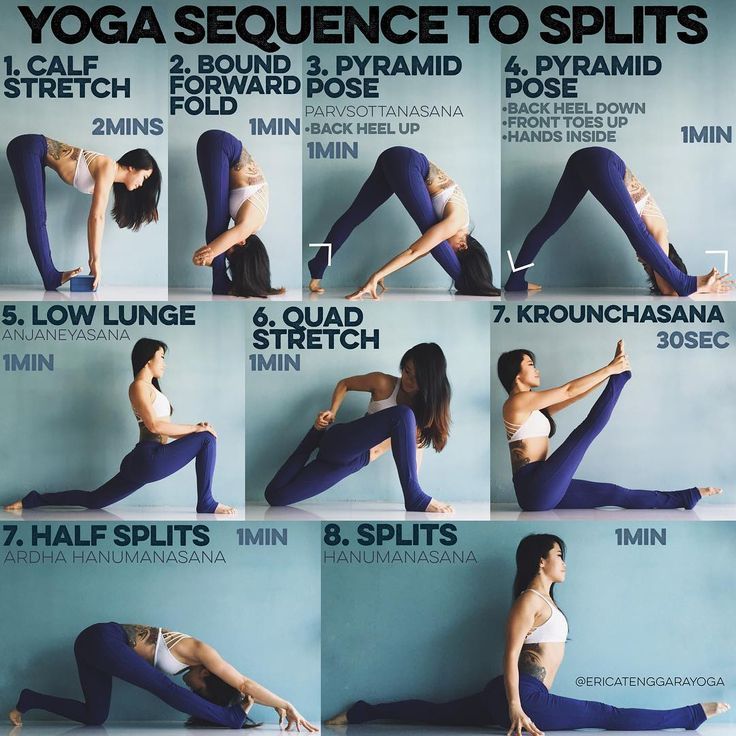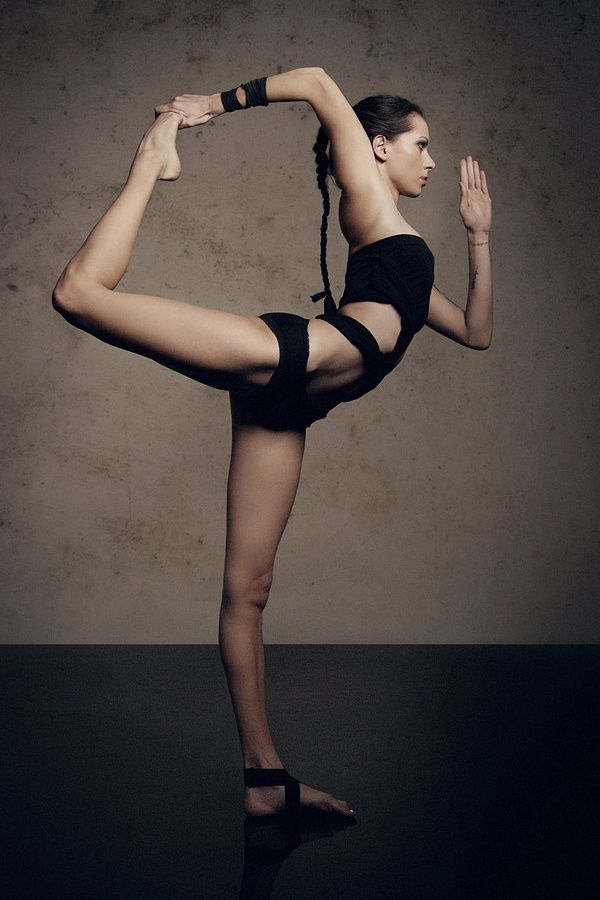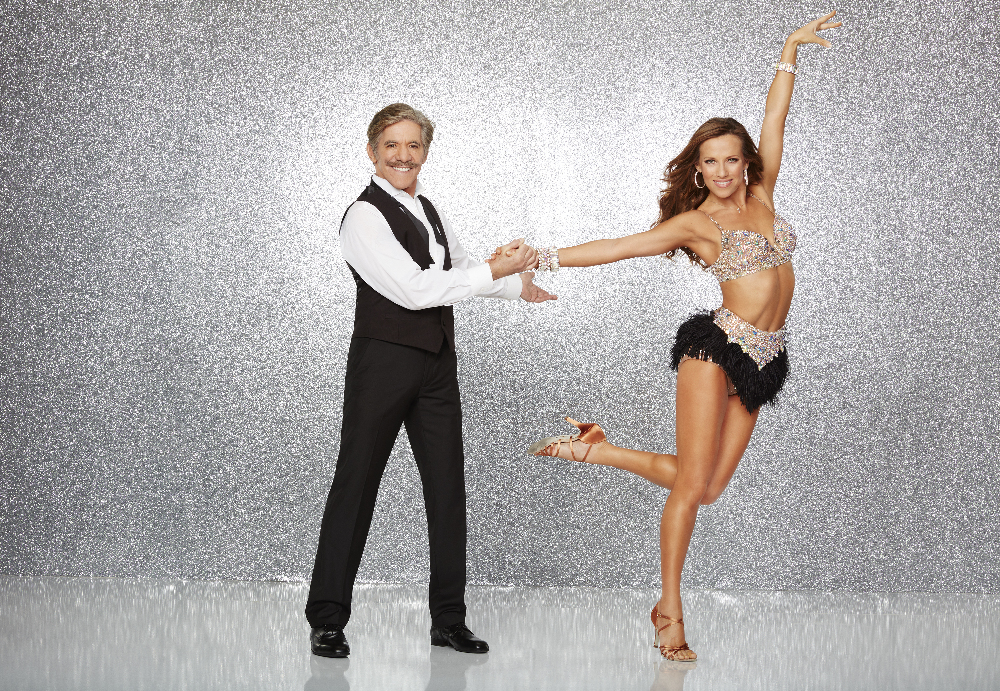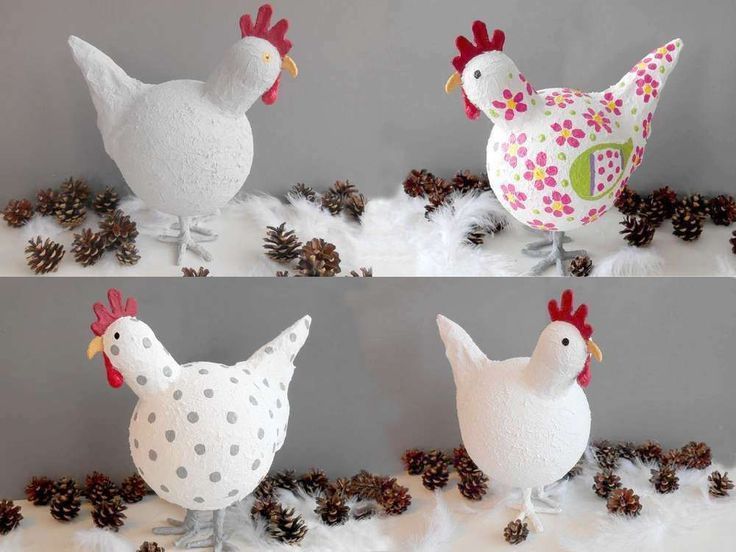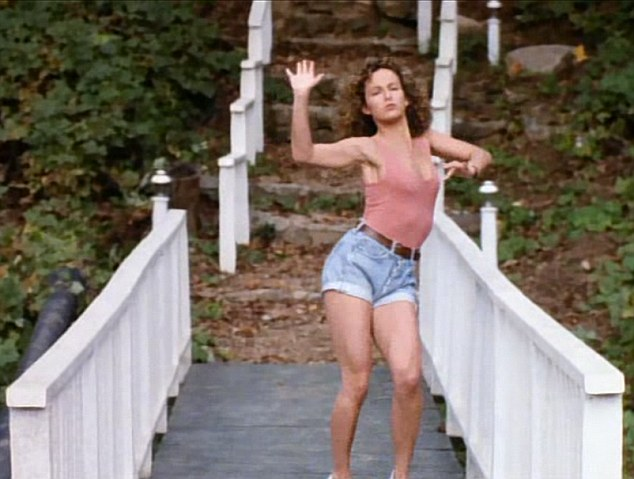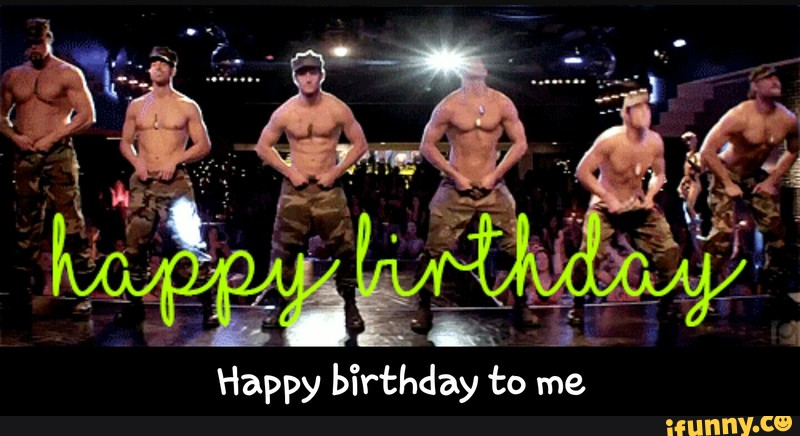How to liquid rave dance
Liquid Dancing - History & Origin of Liquid Dance
One of the most expressive and flexible dance forms present in the world today, liquid dancing is an illusion-based form of gestural, interpretive dance. In other words, it is a dance form that involves smooth gestures and body movements, giving an illusion that the dancer’s body is as movable as something that is liquid, thus the name of the dance. Basically, the arms and hands are in focus, though advanced dancers move the full body. Learning the liquid dance is not easy and requires immense amount of practice and learning. It takes time to learn how to move your body in a way that it gives an illusion of a flowing or moving liquid.
History and Origin of Liquid Dance
The exact origin of liquid dance is a bit hard to trace as some believe there were sightings of this dance as early as the mid 70’s. However, it wasn’t until the 80’s that this dance started to evolve and rise in popularity. Taking inspirations from funk styling, break-dancing and popping, the liquid dance generated its own unique style and evolved as a popular form of street dancing in rave culture. Liquid dancing is a modified and evolved version of waving, one of the techniques used in popping. The difference between popping and liquid dancing is the fact that popping uses sudden jerk like movements while liquid uses smoother movements.
By the late 80’s and early 90’s, liquid dancing had evolved into a very popular form of dancing and self-expression. With time, the performer of liquid dancing also started making use of props. The most common one comprises of a glow-stick. These glow-sticks are usually in very bright colors and add a surreal feel to the whole dancing technique. Sometimes, juggling and miming is also combined with liquid dancing, to make it absolutely different and more complex. However, mostly, liquid dancers follow the fundamentals very carefully, so as not to merge this dance with any other similar dance form.
Techniques
- Hand Flow: It involves moving the hands in a way that fluid illusion is maintained between the two, in keeping the rhythm.
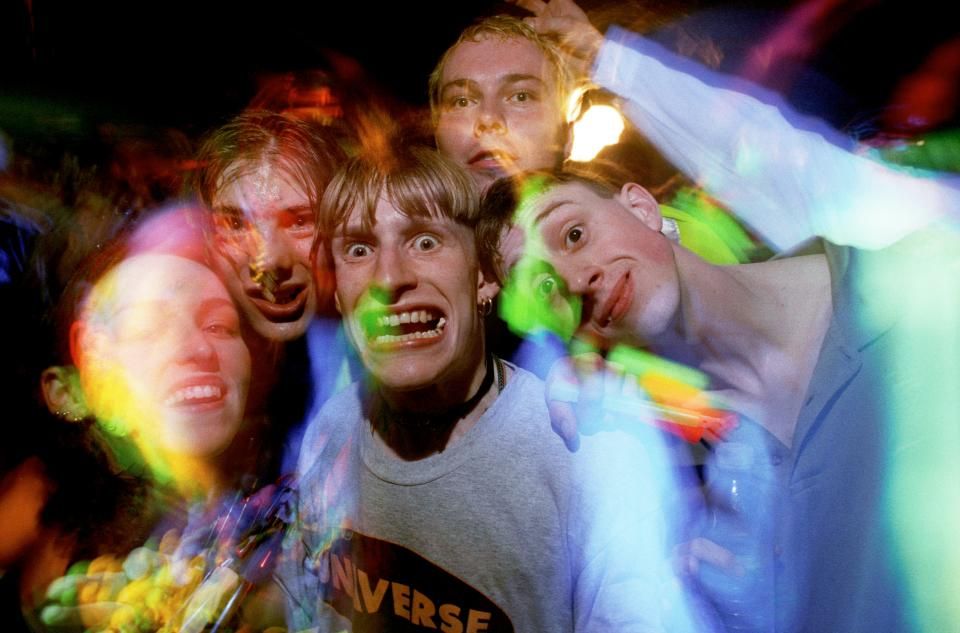
- Rails: It can be described as movement of the dancer's arms along a pre-set path or "rail".
- Waves: In this technique, the dancer has to create the illusion that a wave is passing through his/her body, by alternation between tensing and relaxing of one part of the body.
- Traces: Here, the hand of the dancer traces the path of the wave that is seemingly going through his/her body.
- Threads: This involves creating an illusion that the body parts are being pulled through holes created by the placement of the dancer's arms.
- Contours: In this, the hands of the dancer trace the outline of a real or imaginary object, mostly his/ her own body.
- Splits: This technique has the hands of the dancer maintaining an illusion of fluid relationship, while moving independently of each other.
- Builds: Here, the dancer manipulates imaginary objects, in a way almost similar to pantomiming.
How to Cite
11 Essential Rave Dance Moves For Beginners
When you want to have a good time, rave parties are almost always a top answer.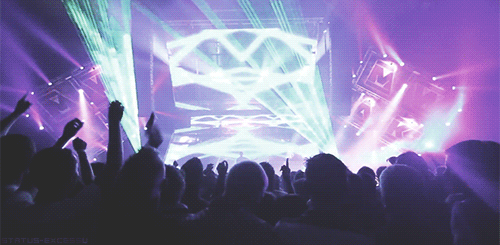 If you’ve never been to such a party before, the scene can look hectic and a bit intimidating.
If you’ve never been to such a party before, the scene can look hectic and a bit intimidating.
But really, though it may look complicated, rave dance moves are actually pretty easy to learn. Rave is different from other forms of dancing in that it’s a free-form, improvisational dance. In theory, you can dance however you want. There’s no “wrong moves” here.
Nevertheless, learning some basic, popular dance moves can build up your confidence and allow you to enjoy the party more. This guide can show you the gists!
Contents
- 11 Essential Rave Dance Moves To Learn For Beginners
- 1. Running Man
- 2. Break Dancing
- 3. Jump Style
- 4. Apple Picking Move
- 5. Melbourne Shuffle
- 6. House Stepping
- 7. Liquid Movement
- 8. The Stomp
- 9. Glowsticking
- 10. Gloving
- 11. Hakken
- Rave Dancing Tips
- Focus On The Music
- Just Relax
- Pay Attention to What Other People Are Doing
- Be Creative
- Final Words
11 Essential Rave Dance Moves To Learn For Beginners
For newcomers, it can be beneficial to learn these basic types of rave dancing. It will give you an idea of how to start when the music comes up and you’re on the stage. The extra confidence that it gives you will be an added bonus, too.
It will give you an idea of how to start when the music comes up and you’re on the stage. The extra confidence that it gives you will be an added bonus, too.
1. Running Man
Source: https://rustnbones.wordpress.com/The Running Man is a move that you can pull when you’re stuck in the middle of a large crowd of ravers. Aside from being simple, you also have the added benefit of it being a static dance move. You merely dance in one spot without moving.
There are two counts to this move. When practicing at home, start slow and say each count aloud. Progressively get faster until you feel natural.
- Count 1: Lift your right knee to level with your waist.
- Count 2: Bring down your right knee. Halfway through the right foot’s downward movement, lift your left foot’s heel and slide backward on the ball.
Repeat the two counts, but this time on your left foot (raise your left knee to waist level on count 1, then lower your left foot and slide your right foot backward on count 2).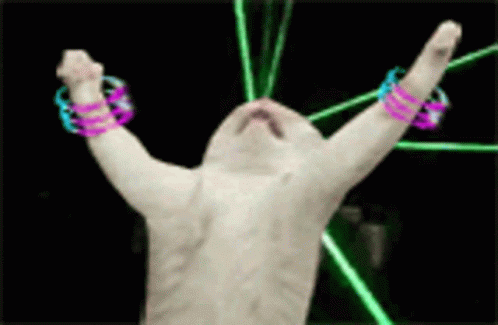
To make it easier to visualize the movement as you practice, imagine you’re walking or running in place. That’s exactly what you’re doing, anyway!
2. Break Dancing
Break dancing (or simply breaking) looks a lot more impressive on stage than Running Man.
Hop up on your right foot, then cross your left foot in front of the right and tap it on the floor. Repeat this motion with the other foot using a double hop.
If you want to add a bit more flair to the movement, you can cross your foot once, then shoot out to the side. That will make the dance a lot more exciting.
3. Jump Style
The basic description for this style of dance is hopping and jumping around with your foot raised, while your arms are kept hanging loosely by your sides. A simple beginner pattern involves five counts.
- Count 1: Hop up with your left foot and kick your right foot forward. Raise your right foot by about a foot high in the air.
- Count 2: Retract your right foot and repeats the first movement.

- Count 3: Switch your foot: hop on your right foot and kick forward with your left foot.
- Count 4: Hop on your right foot again, but this time, kick your left foot backward.
- Count 5: Hop on your left foot and kick your right foot backward. Keep it low.
You can repeat this simple dance sequence how many times you wish. You can mix up the movements or combine them with other moves to flesh out a jump-style dance routine of your own.
Jumpstyle is best done to the beat of hardstyle or gabber music, with a tempo ranging between 140 to 150 BPM.
4. Apple Picking Move
Similar to the Running Man move, the Apple Picking Move is very easy to learn and highly visual. When you dance, just imagine yourself plucking an apple from a tree overhead.
- Raise both of your arms as high in the air as possible, then drop them down.
- Sync your up-and-down movements to the rhythm of your feet.
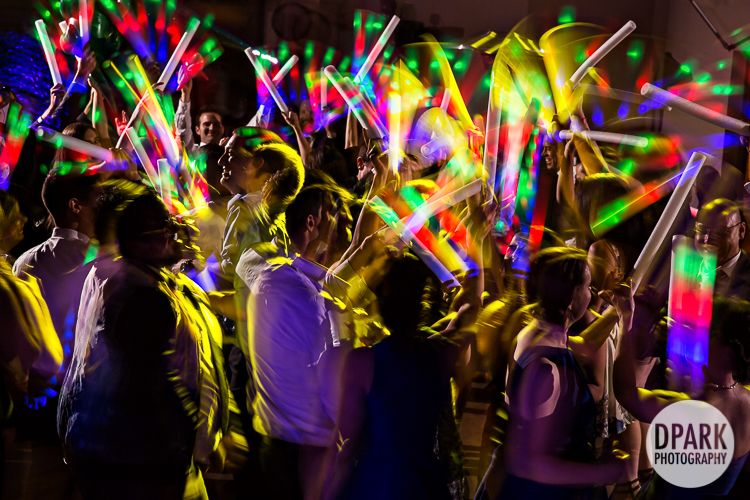
- To add flair to the performance, you can spice it up by shaking your head and mixing in some other dance moves.
Do anything that you can do, so long that it suits the beat of the music and the mood.
If you practice in front of a mirror, the dance could look a bit silly. But don’t worry, that’s part of the magic of a rave dance (and a rave party). You’re not at all expected to look good. The “prime directive” is to have fun!
5. Melbourne Shuffle
Now, we’re not going to lie to you: the Melbourne Shuffle is a pretty advanced move. As such, don’t be discouraged if you don’t nail it on the first try. If you’ve had previous experience with hip-hop or breaking, learning this move would be a lot easier.
The Melbourne Shuffle is basically a mixture between the Walking Man and the Moonwalk. It involves very limited movement of your upper body. Most of the magic is produced by the legs and the arms as they sway in a natural, yet fluid, walking motion. Typically, the dancer will first face a singular direction before they begin to dance.
Typically, the dancer will first face a singular direction before they begin to dance.
It is considered a flat-footed, stomping dance. While you’re caught up in the music, you can also add in pirouettes when the beats suit the move, too.
Do note that the Melbourne Shuffle takes up a lot of space. If it’s too crowded around you, it’s best not to execute it. You’d be at risk of colliding with somebody. In case you do want to try it out, you should seek a sparse spot in the crowd.
6. House Stepping
House stepping, like its name suggests, is best done with the backing of house music (Progressive House, Electro House, et cetera). This dance move simply involves raising your left and right foot up and down to the beat of the music. Your arms should be raised and your elbows tilted.
House stepping resembles Latin dance and Tap dance. Plus, since it requires a lot of upper-body movements, house stepping is basically the mirror opposite of the Melbourne Shuffle.
7.
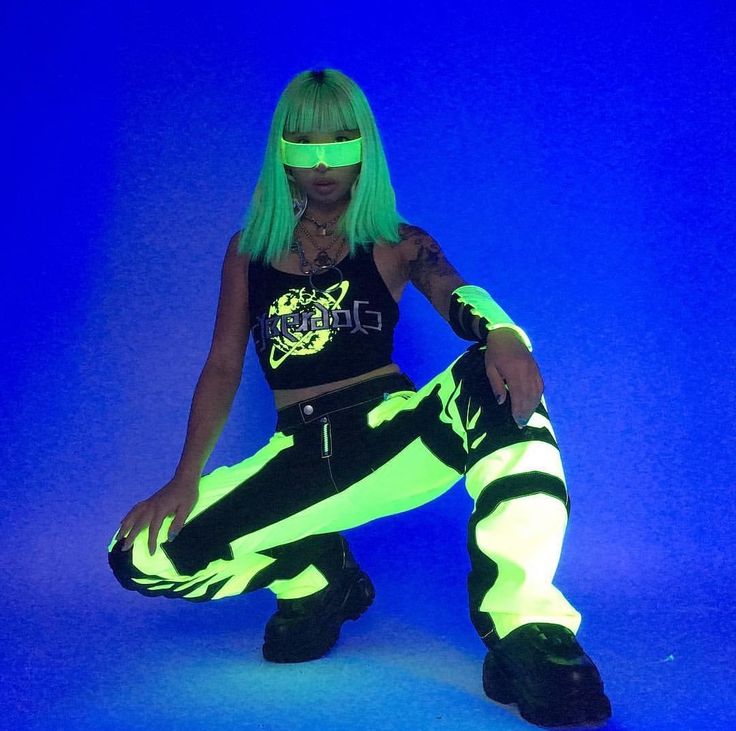 Liquid Movement
Liquid MovementThe Liquid Movement is definitely the toughest rave dance move that you can possibly learn. It’s most suited for people with high flexibility and previous dancing experience.
Liquid Movement is an off-shoot of more traditional break-dancing. When you’re breaking, popping and locking with your feet and hands are expected.
Not so with Liquid Movement. The moment you look too mechanical while executing this move, you’d look out of place immediately. Liquid Movement is all about dancing as fluidly and as naturally as possible to the music, which is why experts at this dance move are often called “octopuses”.
Liquid Movement uses the entirety of your body to simulate the sense of fluidity, which is why a high degree of body flexibility is required for people hoping to execute this dance move.
8. The Stomp
The Stomp is yet another simple and visual dance move. Imagine yourself treading on thick snow. Move and stamp your feet from side to side to the beat of the music.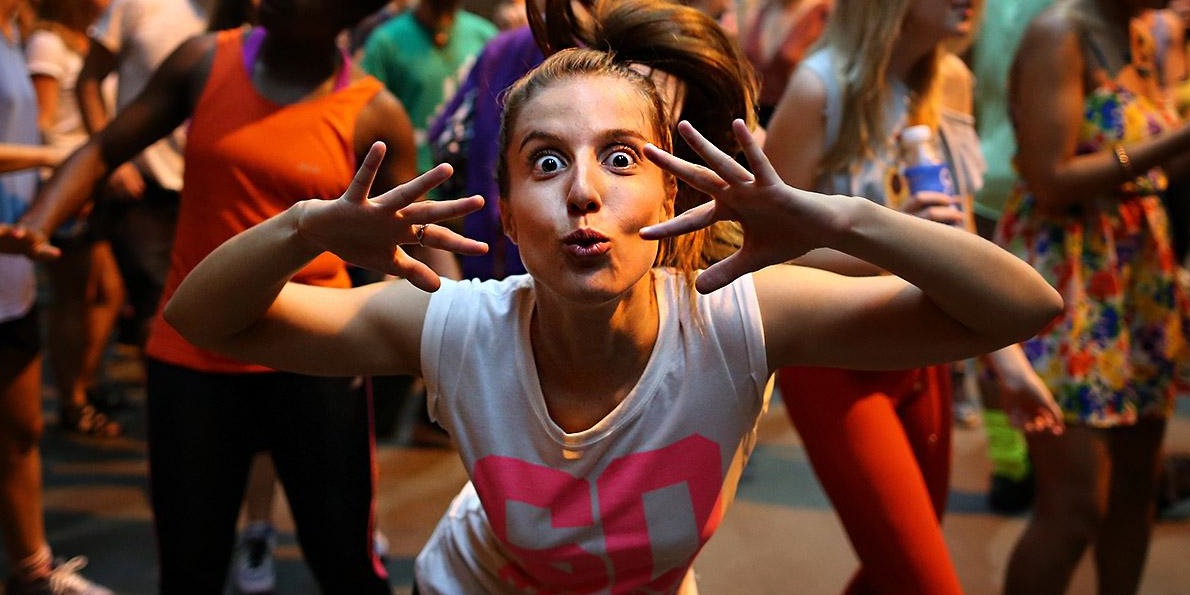
That’s all there really is to the move. It’s a great opener or beginner move. Combine this with the Running Man or Apple Picking and you got yourself a pretty solid basic rave dance routine.
9. Glowsticking
For Glowsticking, you’re going to need some extra accessories. Particularly, you will need some glow sticks (also called rave lights). They can be battery-operated or chemical glow sticks. It doesn’t really matter so long that they glow.
Hold one stick in each hand and dance. Usually, glow stick dancers favor Liquid Movement dance. The fluidity of the dance, when combined with the glowsticks, makes them truly alluring on the dance floor. Even though raves aren’t really about attracting attention, if that’s what you set out to do, it’s a sure-fire way to attract the eyes of other party-goers.
Experienced glow stick dancers may swirl or juggle the sticks around to create a visual feast for other guests. Some attach glow sticks to thin cords and spin them around to create beautiful wheels of light in time with the beat of the music.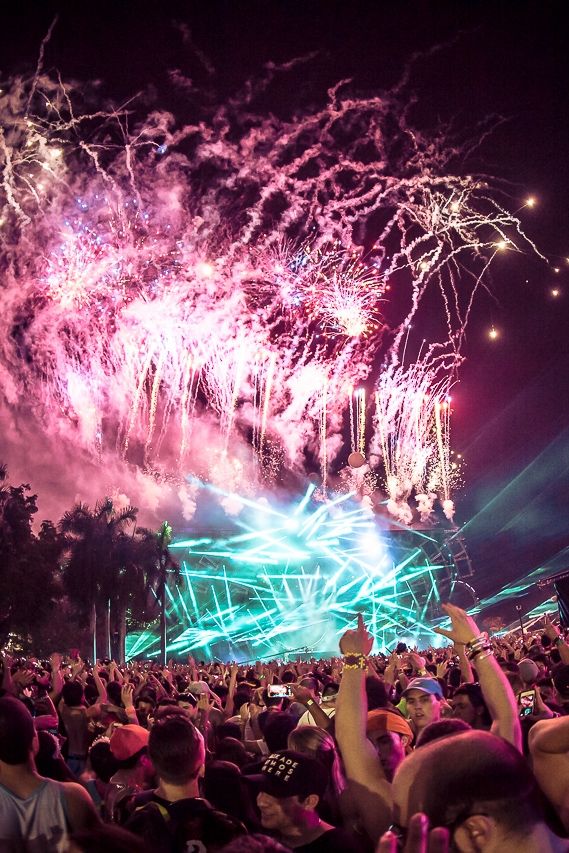 This type of dance is called “poi”.
This type of dance is called “poi”.
If you manage any of that, you’d definitely be the star of that night’s show.
Glowsticking is one of the four light-oriented dances out there.
10. Gloving
Gloving, like Glowsticking, is a light-oriented dance. Instead of using glow sticks, the dancer uses small LED lights attached to their fingertips (hence the term gloving) to make attractive visual patterns.
Because the literal highlight of the dance lies in the diodes attached to your fingertips, gloving is basically a rave dance with your hands and fingers. You will want to incorporate movements that make your hands and fingers stand out as much as possible.
Liquid and digits moves, for example, where you move your body fluidly while also constructing hypnotizing patterns with your finger digits. Finger tutting is also worth looking into if you’re serious about learning Gloving. It’s a dance style that involves intricately moving the fingers around, which will be further accentuated by the fingertip diodes.
11. Hakken
Hakken is a dance style originating from the Dutch hardcore and gabber dancing scenes in the 1990s. The term Hakken is derived from a Dutch verb, which means chopping and hacking.
Basically, the dance is a derivative of zapateo, but with fewer airborne movements. You perform tiny steps with your feet to the rhythm of the bass drum in the music.
Similar to the Melbourne Shuffle, the lower body plays the most important role in this dance style. However, it’s not unusual for Hakken dancers to incorporate their upper body movements into the routine, too.
Hakken is a very high-speed dance. The music (called hakmuziek) can have a tempo as high as 190 BPM. It’s going to take some work to be able to catch up to the beat.
Rave Dancing Tips
Focus On The Music
The music is the most important part of the raving experience. Let the music take full control of your movement. Listen to the beat and let the rhythm and the inspiration take over you.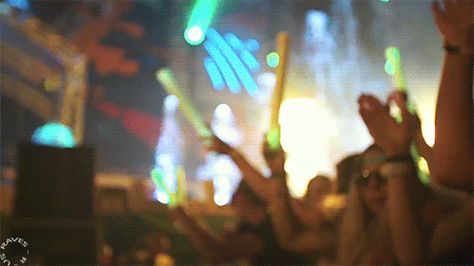 Swing your arms, move your feet, and sway your body in a way that makes you feel most comfortable with the music.
Swing your arms, move your feet, and sway your body in a way that makes you feel most comfortable with the music.
Don’t mind people observing you too much. Once again, the important thing is to have a good time!
Just Relax
Raves are all about letting loose. If you look too mechanical or rigid in your movements, you’re not experiencing the party to the fullest. Plus, rigid movements look very awkward on the dance floor. The more relaxed you are, the more beautiful your movements will be.
It’s entirely okay to feel a bit uncomfortable and self-conscious if it’s your first rave or you’re a naturally shy person. In that case, we recommend attending your first-ever rave with friends or people you trust enough to let loose around. Once you’ve become more comfortable, think of attending or dancing solo.
Pay Attention to What Other People Are Doing
Raves are a social event, so keep an eye out for other people in the crowd. Look at what others are doing. When you find yourself out of ideas for your next move, imitating others is a good tactic to fall back to and keep the fire going.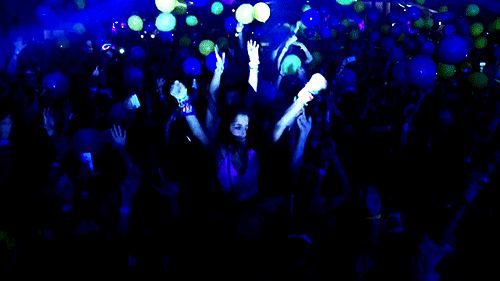
Be Creative
There’s really no framework or structure to rave dancing. It’s all random up there and you can dance however you like. If you want to put a lot of effort into your dance moves, practice by yourself at home and watch plenty of videos online.
Once you’ve mastered some basic moves, think of improving on these moves with your own twists. Be creative! Who knows, maybe you’ll end up inventing a dance move that ravers in the future will learn about.
Final Words
Raves are an excellent way to let loose and have fun after a hard week. Allowing yourself to get lost in the music and the intense energy of the night is a wondrous feeling. With these basic rave dance moves, you’re more or less ready to attend your first of many rave parties in the future!
Hopefully, this guide has served you well. If you have any other questions you’d like to ask, leave them in the comment section below and we’ll get back to you as soon as possible.
Life at a rave: what kind of food is suitable for dancing
In various areas of human life - specialized food. Athletes eat high-energy date bars, opera singers drink a mixture of egg, cognac and honey before a performance to warm up the bundles, tourists carry stewed meat and crackers in their backpacks. But there are people that I don't think the food industry has taken care of properly yet, and that's the ravers.
This is not surprising: no one considers fans of many hours of vigil in industrial halls to loud music with lasers and protracted after-parties as a significant class of consumers, and even auto-correct in the phone corrects the word “techno” to “dark”. Well, it's time to add light, even despite the complexity of the topic. After all, daily dances are little associated with a pleasant appetite, and for experienced people, talking about food at parties can cause a smirk and an offer to treat them with chewing gum. It’s not customary to talk about food at raves. nine0003
nine0003
Meanwhile, this story worries me a lot. About 10 years ago, my whole life revolved around techno: I was a DJ, went to Arma and Solyanka, played in the Zhest club and wrote reviews of world festivals on the 44100.com portal. Then for me, rave food could turn out to be no matter what kind of sandwich or a can of chips, soup at best. I did not think about the importance of proteins, vitamins and trace elements for a weakened body.
Now, after studying in California and several years in the kitchens of various projects, finding myself in an abandoned beer factory in Vienna with a schedule of 40 DJs or going to a techno brunch with friends, I literally cry from what they serve there. I think it's time to formulate the properties of the perfect rave food. Here they are:
In 2015, the Arma team held the Outline festival in Moscow with a no-kill food philosophy, and dozens of gastronomic projects picked up this theme. On the Outline site, you could only buy dishes without meat or fish in the composition.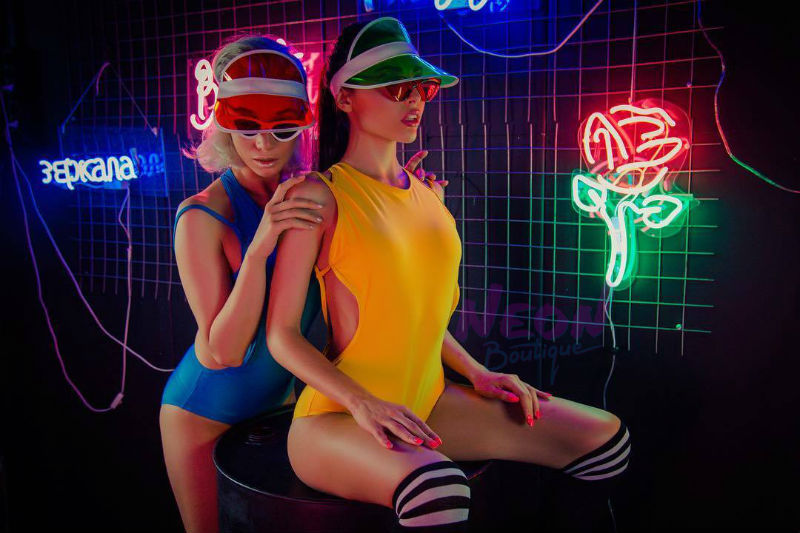 It seemed to me then very organic, because the rave culture with its dark aspects, dance euphoria, a sense of equality and the erasure of social status on the dance floor is incompatible with violence and cruelty. Forgive me, but when you know the structure of the universe, a sausage will not fall into your mouth, but a peach or a banana is easy. Maybe that's why there is a division: rock festivals like "Invasion" are based on medieval epic - there is a lot of meat and beer! And electronic music festivals prefer plant components. nine0003
It seemed to me then very organic, because the rave culture with its dark aspects, dance euphoria, a sense of equality and the erasure of social status on the dance floor is incompatible with violence and cruelty. Forgive me, but when you know the structure of the universe, a sausage will not fall into your mouth, but a peach or a banana is easy. Maybe that's why there is a division: rock festivals like "Invasion" are based on medieval epic - there is a lot of meat and beer! And electronic music festivals prefer plant components. nine0003
It is impossible to find a built-in system of nutritional recommendations for ravers on the Web - doctors, if anything, advise drinking plenty of water. But there are interesting articles on nutrition during rehab. For example, the American Addiction Center Resource suggests that during recovery, give up sweets and carbonated foods, switch to fiber, whole grains and vitamin-rich vegetables and fruits - in general, a classic detox.
Sounds sensible, but there are moments: coarse fiber will be difficult to digest and can cause bloating, so during the Vilalobos set, I would recommend sending all foods rich in fiber before use in a blender. There are a number of foods with strong acidity: tomatoes, for example. They are not suitable, as they can irritate the oral mucosa. In general, everything that can irritate and scratch her should be excluded from food trucks at techno sites - no crackers, chips, sandwiches with aggressive sauces. Ideally, all textures should be delicate and silky, and energy compounds should be valuable. nine0003
When I was running a bar for the Moscow promo group PZDC, one New Year's Eve, my wife Anya Yudakova and I (here she is in Anastasia Ryabtsova's shooting at BURO.) boiled 10 liters of chestnut cream soup. And it’s great party food—you don’t even have to chew it! Boiled cereals are well suited: quinoa, amaranth, whole oatmeal and millet, boiled in water or coconut milk, and not cow's milk, because many people do not digest lactose.
By the way, the ideal food at a rave is ice cream! But not the kind that is sold in the store, but the craft one: it refreshes, saturates, and gives pleasure! It has a lot of liquid, which is clearly not enough for emaciated dancers, and natural sugars, such as agave syrup, provide energy. I tested this hypothesis: Richter manager Zhenya Shchur and I prepared six kilograms of two types of vegan ice cream for our friends at Mutabor - rhubarb and pink pitahaya sorbet and ice cream based on coconut milk and Japanese matcha tea. We did everything without sugar, eggs and harmful additives - only natural ingredients and vitamins in a digestible and tasty form! We arrived at the rave in the morning and treated the lathered dancers. nine0003
I tested this hypothesis: Richter manager Zhenya Shchur and I prepared six kilograms of two types of vegan ice cream for our friends at Mutabor - rhubarb and pink pitahaya sorbet and ice cream based on coconut milk and Japanese matcha tea. We did everything without sugar, eggs and harmful additives - only natural ingredients and vitamins in a digestible and tasty form! We arrived at the rave in the morning and treated the lathered dancers. nine0003
Respect for nature is a big theme of modern rave. Now all promo groups are holding their events more carefully and more consciously than the city authorities organize subbotniks in parks. In the same Mutabor, a separate waste collection system is used, food is given in biodegradable dishes. And this summer, the site decided to abandon avocados in dishes - the fruit has become so popular that they are now cutting down relic forests for planting it. Raver food definitely has a green message! nine0003
Another trait that has always accompanied electronic music and the aesthetics around it is the belief in the future. A rave is an experience that produces a non-trivial audiovisual experience. It will be great if the food is permeated with the idea of novelty. Therefore, I feel that a soft bread sandwich or mushroom cream soup at a party is too boring, everyday neutral and does not provide any exceptional experience.
A rave is an experience that produces a non-trivial audiovisual experience. It will be great if the food is permeated with the idea of novelty. Therefore, I feel that a soft bread sandwich or mushroom cream soup at a party is too boring, everyday neutral and does not provide any exceptional experience.
Frozen heads of Stoyn looked good — about five years ago, in Artplay, the guys made ice cream with liquid nitrogen, grinding fruits with it. They were prepared and served in puffs of steam. And when I was doing a cafe in the Rodnya techno club, somehow we brought multi-colored acid muffins to a hardcore party - this also rolled in. At a techno brunch that fell on Shrovetide week, I cooked green pancakes - I tinted the dough with spinach. The food at a rave should have the same wow factor as the music or clothes you wear to a party. nine0003
If you approach techno-nutrition with the principles described above, you will get a full-fledged, not forced food. It is suitable for everyone who loves not only to dance, but also to take care of themselves and the world around. I am sure that the matter that we let into ourselves is no less important than the broadcast content - music, video, communication with people. In this sense, a green smoothie with passion fruit is like an Aphex Twin record, and a sausage sandwich in a plastic package is like a song from the Dacha radio rotation that you don’t want to hear. I hope that this attitude towards food will be accepted by all the big festivals and rave venues. And I, if anything, will gladly help, because I myself still have to dance on them. And there is! nine0003
It is suitable for everyone who loves not only to dance, but also to take care of themselves and the world around. I am sure that the matter that we let into ourselves is no less important than the broadcast content - music, video, communication with people. In this sense, a green smoothie with passion fruit is like an Aphex Twin record, and a sausage sandwich in a plastic package is like a song from the Dacha radio rotation that you don’t want to hear. I hope that this attitude towards food will be accepted by all the big festivals and rave venues. And I, if anything, will gladly help, because I myself still have to dance on them. And there is! nine0003
How to rave (part 2)
Rave dancing
Rave dancing has entered rave culture at club parties. Now these parties are known for fast and rhythmic music, completely unusual dance styles and crazy bright clothes. After its heyday in the 80s and 90s, the popularity of rave culture has declined a bit, but rave is now experiencing its second revival.
Rave style dancing
What distinguishes rave dancing from other styles is that it is actually a complete improvisation of the dancers, there is no single style in the dance that needs to be followed. Each dancer simply surrenders to the will of the music and moves solely for his self-expression. nine0003
Rave Dance
For those who have never been to a rave and find it difficult to improvise, try a few dance steps at home before going to a rave party. While they probably won't be useful at a party, they will at least give you a sense of confidence that the person is familiar with the party style.
Rave Dance
Running Man
A high, energetic step that can be repeated constantly while dancing. It also acts as a great workout. nine0055 - Raise your right knee to waist height;
- As you lower your right foot to the floor, slide your left foot back, lifting your heel and sliding on your toe;
- Raise your left knee to waist height;
- As you lower your left foot to the floor, slide your right foot back on your toes.
This step is called "running man" because it looks like running in place. Moreover, it is worth noting that this step, due to the execution of this movement in a limited space, becomes an almost ideal step for a crowded rave dance floor. nine0003
Rave dancing
Breaking (breakdancing)
This simple step looks quite impressive on the dance floor.
- Jumping on the right foot, place the left foot in front of the right, touching the floor with it while jumping;
- Repeat this step with the other leg.
Rave style dancing
Jump style
The basic movement style consists of five jumps during which the non-supporting leg is raised in the air. Hands are practically not used at all, except perhaps for balance. nine0003
Rave Dance Accessories: Glow Sticks
The neon colors of the glow sticks (both chemical and battery powered LED) are great for rave dancing.
